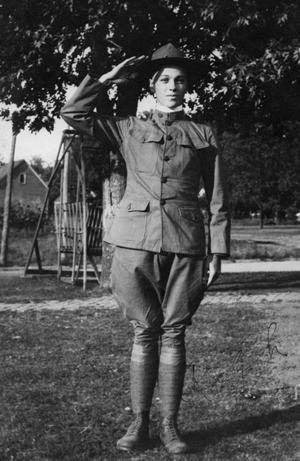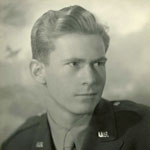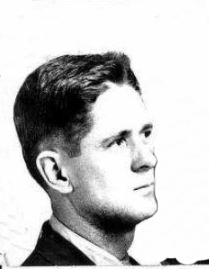

William entered service on May 7, 1917 and served until April 17, 1919. U. S. Navy and Marine Corps Registries show the following: July 1, 1918 William J. McGoldrick, machinist, RF (Naval Reserve Force), Northern Bombing Group, Paris, France; Sept. 1, 1918, machinist, RF, Naval Aviation HQ, Paris, France; January 1, 1919, machinist, RF, en-route home; for the remainder of his service he is shown at Chatham Naval Air Station.
On July 21, 1918, before William was stationed there, tiny Orleans, Massachusetts near Chatham Naval Air Station came under attack from German U-boat 156 which fired shells that hit Nauset Beach, the only attack on Americal soil during WW I. Although the U-boat managed to sink 3 of 4 barges present the whole event was something of a fiasco. The sub was a horrible marksman, the crews from Chatham were not well versed in arming their bombs and ended up throwing wrenches at the sub, the Coast Guard set sail on 25 foot wooden boat with a 25 hp motor!
Read more about it here.

His letters home or directly to the newspaper were published throughout his engagement. First is a letter from Camp Dodge in Des Moines just before they leave for Fort Deming, New Mexico where his letter tells of testing a gas mask. The paper also published several notes and letters he sent his mother while on leave in France.

I find a record of his return from Europe aboard the SS Santa Rosa which sailed from Southhampton, England on June 14, 1945 arriving at the Port of New York on June 21. It does not appear to be a troop ship as there are folks of all ages and genders aboard.
A Honeywell web-page indicates that Minneapolis-Honeywell was approached by the US Military for engineering and manufacturing projects. In 1941, they developed a superior tank periscope and camera stabilizer as well as the C-1 autopilot. The C-1 revolutionized precision bombing in the war effort, and was ultimately used on the two B-29 bombers that dropped atomic bombs on Japan in 1945.
According to his daughter, Bob didn't like to talk much about his service but letters to his mother detail the cold and destruction of the many German cities he was in. In addition to being a member of the band he also worked as an MP.


Bob's service in Viet Nam was as a Sergeant in the Americal Division (23rd Infantry) based at Chu Lai. The Americal Division became notorious after a platoon of troops from the division led by Lieutenant William Calley slaughtered hundreds of South Vietnamese civilians in the My Lai Massacre in March 1968.
Bob worked in psychological operations, distributing anti-communist propaganda, and also worked on the helicopters, bringing in supplies to firebases, and hauling dead and wounded back to base. They also flew agent orange dispersal flights...getting sprayed themselves with what they were told was harmless insecticide. He was shot in the leg, had shrapnel in his back, and had his ear shot off, which they managed to stitch back on. He received several medals for his service. He returned to Minneapolis to attend the U and got his degree in Journalism. He was one of the founding members of the Minnesota chapter of Vietnam Vets Against the War and participated in many demonstrations and anti-war activities.
Agent Orange, named for the orange stripe around the storage drums used to store it, was a mixture of herbicides that US military forces sprayed in Viet Nam from 1962 to 1971. The intended use was to defoliate forest areas that might conceal Viet Cong and North Vietnamese forces and destroy crops that might feed the enemy. Publications by the United States Public Health Service have shown that Vietnam veterans, overall, have increased rates of cancer, and nerve, digestive, skin, and respiratory disorders. The Centers for Disease Control and Prevention notes that in particular, there are higher rates of acute/chronic leukemia, Hodgkin's lymphoma and non-Hodgkin's lymphoma, throat cancer, prostate cancer, lung cancer, colon cancer, Ischemic heart disease, soft tissue sarcoma, and liver cancer. With the exception of liver cancer, these are the same conditions the U.S. Veterans Administration has determined may be associated with exposure to Agent Orange/dioxin and are on the list of conditions eligible for compensation and treatment.
In addition, the odds of having a child born with birth defects during or after the war were more than a third higher for veterans who say they handled, sprayed or were directly sprayed with Agent Orange than for veterans who say they weren’t exposed or weren’t sure. Since then, those findings have guided the government position on disability benefits for children of Vietnam vets. The VA makes payments only to those who have spina bifida, in which the spinal cord doesn’t develop properly, and the children of a small number of female Vietnam vets with 18 other diseases. That leaves out the vast majority of vets’ ailing children.
Bob suffered from a number of ailments due to his exposure to Agent Orange. He died at the age of 69 as a direct result of his exposure to Agent Orange.